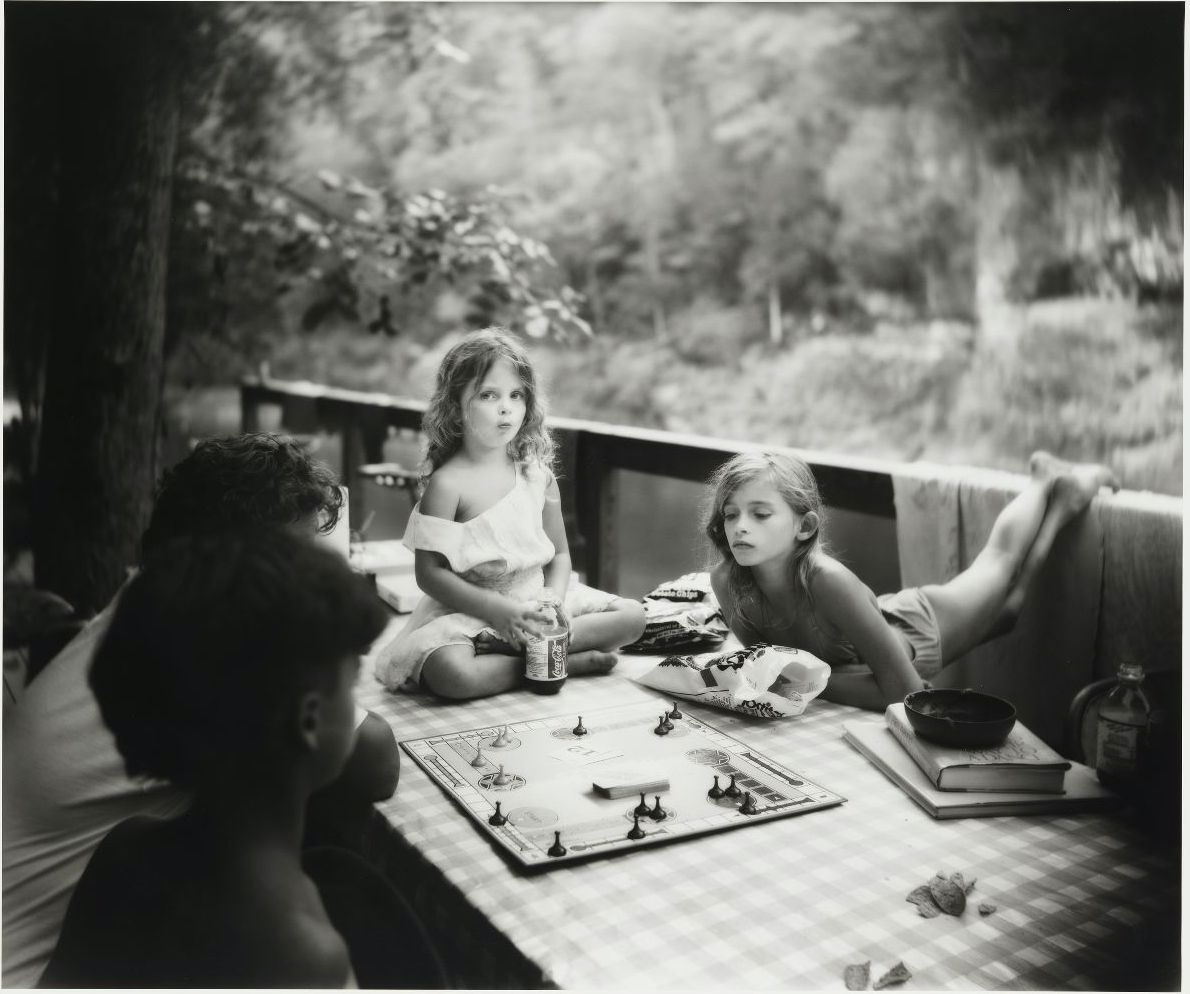

Sally Mann, Sorry Game, 1989, gelatin silver print, image: 19 ??? × 23 ???? inches, sheet: 19 15??? × 23 13??? inches. Whitney Museum of American Art, New York. © Sally Mann, image courtesy Whitney Mu
December 18 – March 15, 2021 @ Asheville Art Museum
Asheville, N.C.— "Vantage Points: Contemporary Photography from the Whitney Museum of American Art"is on view in the Asheville Art Museum’s Explore Asheville Exhibition Hall through March 15.Vantage Points?features a selection of photographic works from the 1970s to the mid-2000s that highlights how photography has been used to represent individuals, places and narratives. Drawn exclusively from the Whitney’s permanent collection, this presentation includes approximately 20 artists, including Diane Arbus, Richard Avedon, Gregory Crewdson, William Eggleston, Nan Goldin, Sally Mann, Peter Hujar, Robert Mapplethorpe, Cindy Sherman, Lorna Simpson and Andy Warhol.
"We're thrilled to bring this presentation of photographs from the Whitney Museum of American Art's collection to Western North Carolina,” said Hillary Schroeder, assistant curator. “The diverse group of artists in this exhibition offer views through the lenses of their cameras into the stories, individuals and places of contemporary Americana that varies from the viscerally real to fantastically imagined."
These artists began working at a time when photography was becoming increasingly integrated into the art world. Technological developments permitted them to use many different photographic processes and to print their works in various sizes, including ones that would create an immersive impact. The photographs included in this exhibition range from seemingly straightforward representations to those with an imaginative or conceptual perspective that challenge traditional notions of photography as revealing a singular reality.
Many of the artists during this period used photography to portray their communities, friends and themselves. Robert Mapplethorpe’s portraits highlight the physicality of his subjects, while those by Peter Hujar, Nan Goldin, and Andy Warhol emphasize a personal intimacy. Diane Arbus’s photographs, such as Untitled #16(1970–1971), expose the relationship between the photographer and the subject as they reveal themselves to her. InCerise(2002) Richard Artschwager transformed photographs taken of his subject from different angles into a three-dimensional freestanding form.
Other artists portrayed the characteristics and poetics of place through photography. William Eggleston’s spontaneous color photographs, such asUntitled (Flowers in Front of Window)(circa 1970), depict a landscape of everyday life in the South, while Richard Avedon’s black and white photographBill Curry, Drifter, Interstate 40, Yukon, Oklahoma, 6/16/80(1980) from his In theAmerican West(1985) series is a tribute to the way the body can reflect a sense of place. Historical and social aspects of place are emphasized in Vera Lutter’s ominous photographThe Appropriation of Manhattan, Fire boat House, Fulton Ferry Landing, Brooklyn New York, May 20, 1996 (1996), made from a large-scale camera obscura. A conceptual relationship between perspective and sense of place is highlighted in Rodney Graham’s inverted photographs of solitary trees taken in the English countryside, such asOak, Banford(1990).
Depictions of the individual and of place often overlap in photographs that explore the narrative potential of photography. By combining images or fragments of images, sometimes with text, artists used photography during this time to explore imaginary or conceptual narratives that speak to personal, social, and political histories. The text in Lorna Simpson’sOutline(1990), which is printed on plastic plaques and affixed to two black-and-white photographs, can be read from left to right and in relationship to the photographs. They suggest various social and historical experiences of African American women. Other artists photographed staged situations in order to encourage narratives. These range from an imaginary personal history—based on assumptions drawn from a gesture, clothing, hair, and makeup—as in Cindy Sherman’sUntitled(2000), to a fantastic story of a moment in time, as in Gregory Crewdson’sUntitled (beckoning bus driver)(2001–2002), set on a dark suburban street.
This selection of works from the permanent collection of the Whitney Museum reveals the strength of the photographic image in the late-20th and early-21st century in the United States. In surprising and inventive ways, the artists included in this presentation have pushed the boundaries of the medium and expanded the role of photography within the history of art.
Admission toVantage Pointsis free for museum members or included with general admission. This exhibition was organized by the Whitney Museum of American Art, New York, and curated by Carrie Springer, assistant curator, Whitney Museum. Additionally, Vantage Points was organized around transformative gifts and promised gifts to the Whitney Museum from Emily Fisher Landau.
Category: Art, Photography